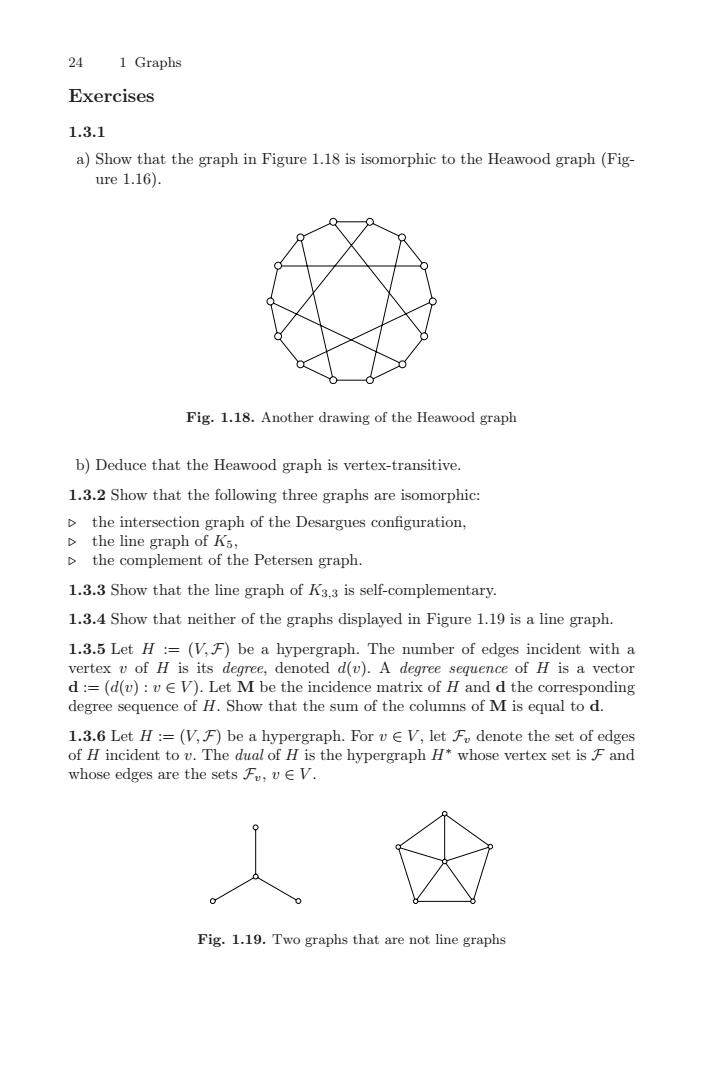正在加载图片...

241 GraphsExercises1.3.1a) Show that the graph in Figure 1.18 is isomorphic to the Heawood graph (Figure1.16).Fig. 1.18. Another drawing of the Heawood graphb) Deduce that the Heawood graph is vertex-transitive.1.3.2 Show that the fllowing three graphs are isomorphic:D the intersection graph of the Desargues configuration,the line graph of Ks the complement of the Petersen graph.1.3.3 Showthat the line graph of K3.3 is self-complement:a1.3.4 Show that neither of the graphs displayed in Figure 1.19 is a line graph1.3.5 Let H := (V, F) be a hypergraph. The number of edges incident with aex u of H is its degree, denoted d(u). A degree sequence of H is a vectorord :=(d(u) :we V). Let M be the incidence matrix of H and d the correspondingdegree sequence of H. Show that the sum of the columns of M is equal to d.1.3.6 Let H :-- (V, F) be a hypergraph. For u e V, let F, denote the set of edgesof H incident to u. The dual of H is the hypergraph H* whose vertex set is F andwhose edges are the sets Fu, u e V.Fig. 1.19. Two graphs that are not line graphs24 1 Graphs Exercises 1.3.1 a) Show that the graph in Figure 1.18 is isomorphic to the Heawood graph (Figure 1.16). Fig. 1.18. Another drawing of the Heawood graph b) Deduce that the Heawood graph is vertex-transitive. 1.3.2 Show that the following three graphs are isomorphic: the intersection graph of the Desargues configuration, the line graph of K5, the complement of the Petersen graph. 1.3.3 Show that the line graph of K3,3 is self-complementary. 1.3.4 Show that neither of the graphs displayed in Figure 1.19 is a line graph. 1.3.5 Let H := (V, F) be a hypergraph. The number of edges incident with a vertex v of H is its degree, denoted d(v). A degree sequence of H is a vector d := (d(v) : v ∈ V ). Let M be the incidence matrix of H and d the corresponding degree sequence of H. Show that the sum of the columns of M is equal to d. 1.3.6 Let H := (V, F) be a hypergraph. For v ∈ V , let Fv denote the set of edges of H incident to v. The dual of H is the hypergraph H∗ whose vertex set is F and whose edges are the sets Fv, v ∈ V . Fig. 1.19. Two graphs that are not line graphs